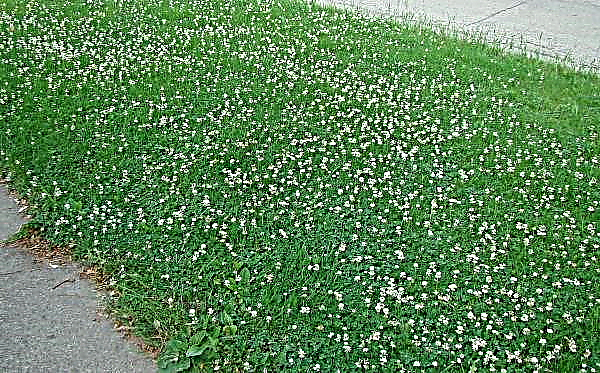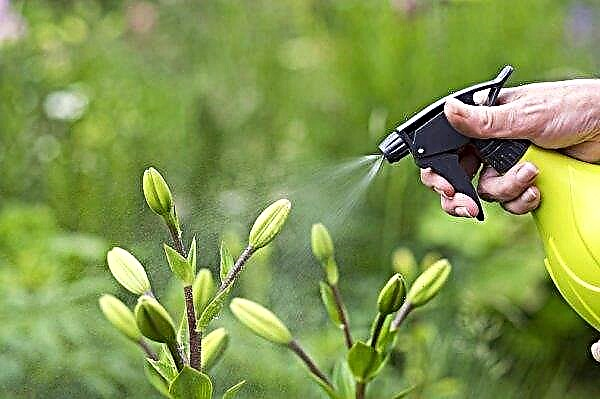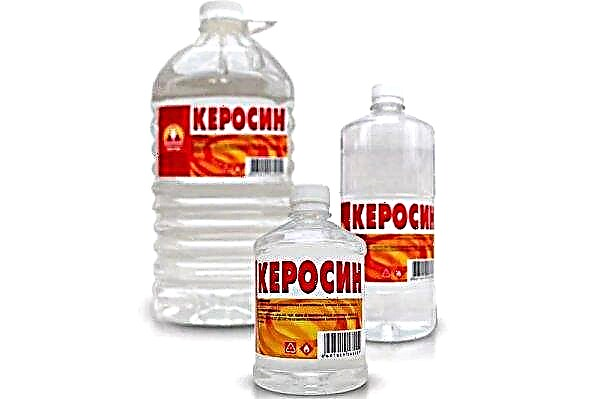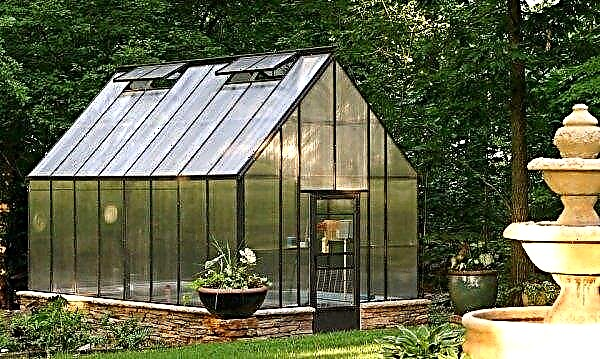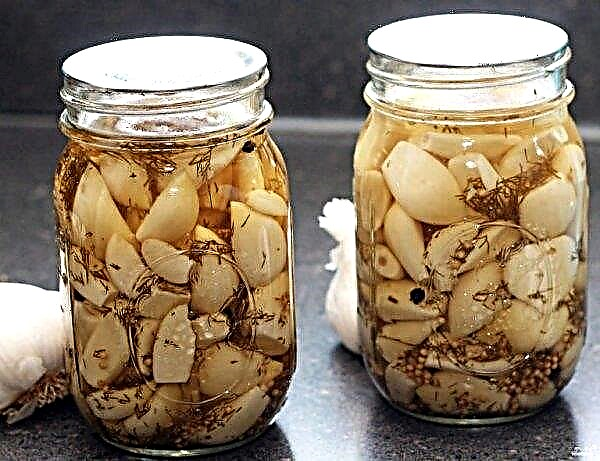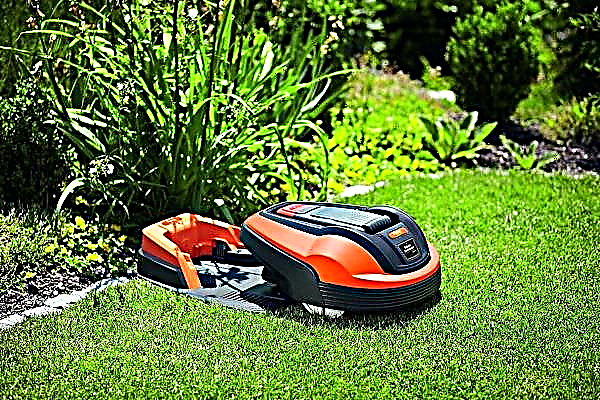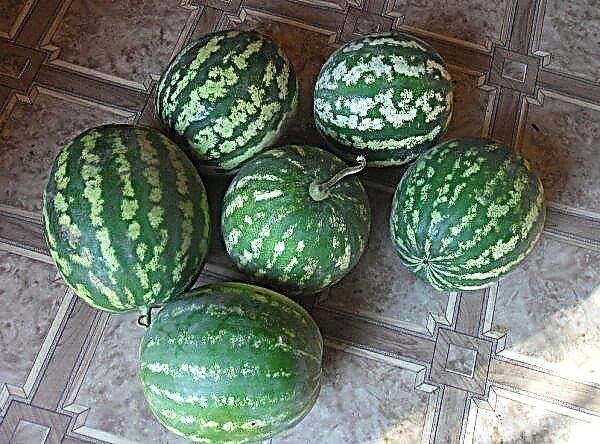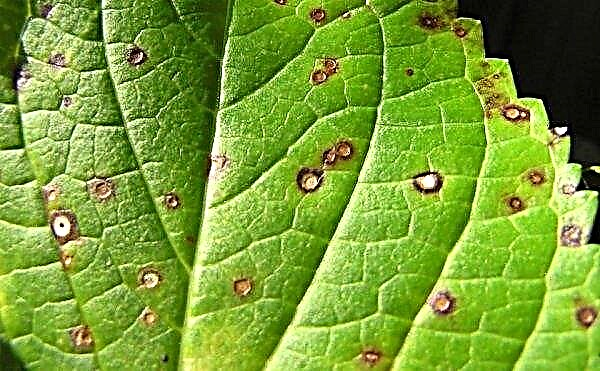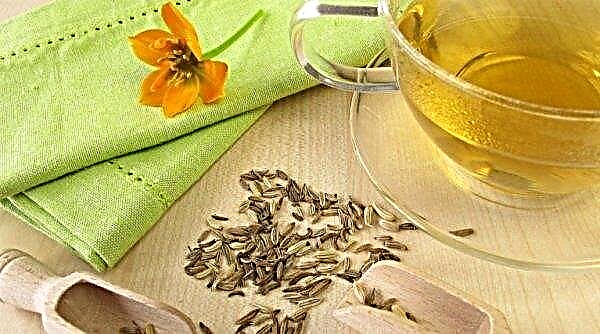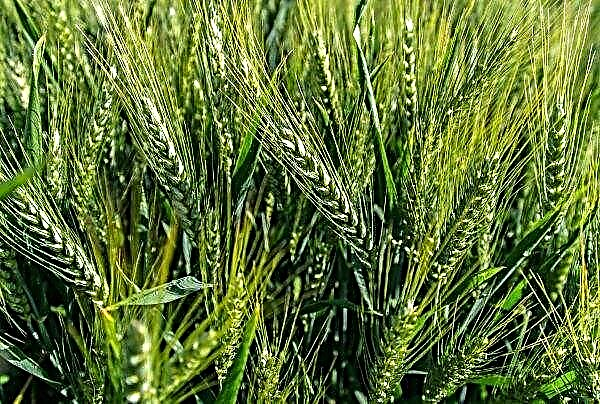Hydrangea tree-like Magic Pinkerbell is a relatively new representative of the Hydrangea arborescens family, which many have already fallen in love with. This plant of stunning beauty is perfect for growing in our latitudes, because with proper care it has a fairly compact crown with very beautiful flowers and leaves. Magical Pinkerbell is equally popular among amateur gardeners as well as professional landscape designers.
Grade description
Magic Pinkerbell is a variety of hydrangea tree-like, the main advantages of which are vitality and plentiful beautiful flowering. It appeared in 2010, when breeders managed to get a plant that has some similarities with Strong Annabelle and Pink Annabelle. However, it was only possible to patent it in 2018. This tree hydrangea can reach a width and height of 1.25 m.
Did you know? The birthplace of hydrangea is Japan. The first information about this plant appeared in Europe in 1768 thanks to a French expedition. Started breeding in 1900.
Shoots are strong, resistant to various natural phenomena, reliably hold large inflorescences collected in a spherical brush with a diameter of 20-30 cm. Each inflorescence contains both small pale pink, almost white, fertile, and large paniculate sterile flowers of noble purple -color pink. Leaves - elongated, ovoid or elliptical in shape, with light notches, dark green in color. Diameter - from 8 to 15 cm.
Landing
Magic Pinkerbell, like most tree hydrangeas, is considered a fairly simple and unpretentious plant to care for. However, there are still some nuances and requirements for the composition of the soil, place and time of planting, the knowledge of which will favorably affect the growth and flowering of the bush.
Video: how to plant hydrangea
When to plant
Magical Pinkerbell can be planted both in early spring and fall. If you decide to plant hydrangea in the spring, you need to do this before the buds open. However, there is a small snag: in most regions of the country the soil at this time is still frozen, and it is almost impossible. For such an area, the best solution would be an autumn landing. If you plant hydrangea in early September, under the influence of the still warm autumn sun and rains, the plant quickly adapts, takes root in a new place and can calmly winter.
Site selection and soil preparation
When choosing a landing site, Magical Pinkerbell should take into account that it does not respond well to bright sunlight - the intensity and quality of growth decreases, flowering becomes less plentiful, inflorescences are smaller. The best option is a partial shade area that is protected from the wind. Shrub prefers moist, but not swampy, slightly acidic soil. Magic Pinkerbell is considered a frost-resistant variety, but many gardeners for reinsurance cover the plant with a synthetic fabric for the winter. If some shoots were frozen, do not be upset - in the spring young and healthy will appear from the root.
Important! You can not add chalk, lime and wood bark, as well as substances containing them. This can lead to the death of the seedling.
When a place for planting hydrangea is chosen, a simple but important preparation of the land should be performed. A hole should be dug, the width of which will be about 50 cm. The day before planting, this depression must be filled with water. When the moisture is completely absorbed, you need to pour a special soil mixture for hydrangeas into the pit, which includes needles, peat, humus, sand and earth from under deciduous trees. It is also advisable to fertilize. Potassium superphosphate and potassium sulfate are excellent for these plants. A description of the use of these products can be found on the packaging.
Landing algorithm
The principle of planting hydrangea tree Magical Pinkerbell is not very different from other plants of this family.
Did you know? In the homeland of hydrangea, in Japan, her flowers symbolize sincere feelings, awe. In Victorian culture, this plant is associated with vanity, boasting and indifference.
However, if you are dealing with such seedlings for the first time or want to do everything as correctly as possible, it is recommended that you follow this algorithm of actions:
- A few weeks before landing, you should choose a place, mark the territory and prepare a hole with a diameter of about 0.5 m.
- A day before planting a seedling, you need to abundantly water the pit, pour special soil for hydrangeas into it and make fertilizers.
- Remove the young bush from the container in which it was purchased, and place it in the center of the recess.
- Position the plant so that its root neck protrudes slightly above the ground, and all the roots are well spread.
- Fill the roots with soil in a circle, slightly tamping the soil.
- When the recess with the seedling is already almost completely covered with soil, you need to pour a bucket of water into it and give a little time to absorb it.
- Fill the hole to the edge.
- Mulch the trunk circle. This technique will help prevent moisture from evaporating. Materials such as sawdust or chopped wood bark are suitable for this purpose.

Care
Despite its exotic name and striking appearance, Magical Pinkerbell can be called an unpretentious and not troublesome plant to care for. However, some nuances still exist. This variety can be called quite resistant to damage by various diseases and pests, but it happens that it can be attacked by gray rot, powdery mildew, or other widespread fungal diseases.
Important! On the Internet, from time to time there are proposals to buy Hydrangea variety Tinkerbell hydrangea. Be careful, this sort does not exist, and most likely you are dealing with an unscrupulous or unskilled seller.
All tree hydrangeas respond well to systematic top dressing. To do this, it is recommended to use compost, which favorably affects the soil structure and enriches it with humus, as well as a mixture of mineral fertilizers (preferably special for this family).
Watering
In the summer heat without regular plentiful watering, Medikal Pinkerbell will not be able to survive, especially if the basal circle was not mulched. During this period, you need to water the plant twice a week, each time pouring about 4-5 buckets of water under an adult plant. If the weather is rainy, you should not water it so often. The water that will be used for irrigation must be warm and settled. Do not use stagnant water - this can lead to rotting of the root system. Do not use chlorinated water for irrigation - this is fraught with leaf chlorosis.
The water that will be used for irrigation must be warm and settled. Do not use stagnant water - this can lead to rotting of the root system. Do not use chlorinated water for irrigation - this is fraught with leaf chlorosis.
Fertilizer
Without the right high-quality feeding, it is almost impossible to achieve lush and plentiful flowering. Experts recommend fertilizing twice a year. The first time this needs to be done during the period of kidney swelling. Urea diluted in a proportion of 2 g per 1 liter of water is perfect for these purposes. The second feeding is performed after flowering. During this period, you should use mineral fertilizers. In addition, in the summer, organic fertilizers will not be superfluous Hydrangea Pinkerbell hydrangeas during flowering.
Video: hydrangea organic nutrition
Pruning
Due to the fact that hydrangea trees have a very wide and dense crown, proper and systematic pruning is a very important part of caring for this plant. This is best done in early spring (March - April), when the growing season is just beginning. Weak, diseased and frozen branches should be removed completely, and healthy ones should be shortened over 2-3 eyes. Do not worry that spring pruning will affect the splendor of flowering - inflorescences are formed on the annual shoots that appeared in the current growing season.
Weak, diseased and frozen branches should be removed completely, and healthy ones should be shortened over 2-3 eyes. Do not worry that spring pruning will affect the splendor of flowering - inflorescences are formed on the annual shoots that appeared in the current growing season.
Proper wintering
Magical Pinkerbell is considered a frost-resistant variety, it is adapted to our winters. Even if some branches are frozen, they should, without hesitation, remove and wait for the young shoots, which will make the flowering even more plentiful. There is a way to maximally protect the bush from hypothermia in the winter: preparing the plant for wintering, remove all thin and directed shoots in the middle, remove fallen leaves.
Important! Hydrangea inflorescences are quite heavy, and very often the branches can not withstand such a weight, so it is recommended to prepare a support-ladder.
Divide all the branches into several parts and tie, and then bend them to the ground and secure. First, throw non-woven material on the bush, sprinkle a layer of dry foliage, cover it all with a film and, finally, heavy material that the wind cannot carry.
Breeding
Experts offer several methods of propagation of this variety, but gardeners consider most effective cuttings. To use this method, you need to cut a branch (from a young shoot) about 10 cm long and plant it in a greenhouse, where it should be regularly watered and aired. It is desirable to treat the cut site with an agent that stimulates rooting and growth.
Another fairly popular method of propagating hydrangeas is from layering. To do this, in the spring, the earth under the sapling needs to be dug up and leveled. Then you need to dig a few long furrows, where to lean annual shoots (without separating them from the mother plant) and sprinkle with earth. By the end of summer, new shoots should appear on the layering.
Once their height is 50 cm, they can be disconnected from the mother bush and transplanted to the place prepared for him. The simplest, but most painful for the plant can be called division of the bush. For this, the mother sapling is dug up, washed out the roots and divided into several parts. The resulting bushes are planted in the right place.
Application in garden design
Since the hydrangea tree-like Magic Pinkerbell has a fairly lush crown and a bright appearance, it is mainly used for single landings near dark fences and green lawns. But no less advantageously it will look in combination with other types of hydrangeas.
Did you know? Tea made from hydrangea is considered a valuable ritual drink in Buddhist culture. It is prepared and drunk on a holy day for this religion. — The birth of the Buddha and sincerely believe that he has unique healing and magical properties.
In addition, experts argue that this plant goes well with such green inhabitants of personal plots as hosta and fern, who also prefer partial shade. When you design a large area Magical Pinkerbell effectively looks like a hedge. Inflorescences have an original decorative appearance even after flowering and are used for dry compositions and bouquets. Hydrangea tree-like Magic Pinkerbell is a truly magnificent plant. If you properly care for her, she will become the real queen of the summer garden, who will delight the eye with her lush, bright and noble flowering.
Hydrangea tree-like Magic Pinkerbell is a truly magnificent plant. If you properly care for her, she will become the real queen of the summer garden, who will delight the eye with her lush, bright and noble flowering.

